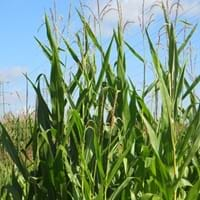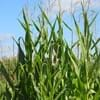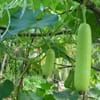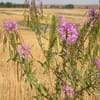Life Span
Annual
Perennial
Origin
Hybrid origin, North America, Central America, South America
Hybrid origin, Mexico, Central America, South America
Types
Field Corn, Sweet Corn, Baby Corn, Indian Corn
Not Available
Habitat
Clay soil areas, Loamy soils, Sandy areas
Coastal Regions
USDA Hardiness Zone
Not Available
11-15
Sunset Zone
A1, A2, A3, H1, H2, 1a, 1b, 2a, 2b, 3a, 3b, 4, 5, 6, 7, 8, 9, 10, 11, 12, 13, 14, 15, 16, 17, 18, 19, 20, 21, 22, 23, 24
A1, A2, A3, H1, H2, 1a, 1b, 2a, 2b, 3a, 3b, 4, 5, 6, 7, 8, 9, 10, 11, 12, 13, 14, 15, 16, 17, 18, 19, 20, 21, 22, 23, 24
Habit
Upright/Erect
Upright/Erect
Flower Color
Not Available
Yellow
Flower Color Modifier
Bicolor
Bicolor
Fruit Color
White, Yellow, Light Yellow, Peach
Red
Leaf Color in Spring
Green, Dark Green
Green, Dark Green
Leaf Color in Summer
Green, Dark Green
Green, Dark Green
Leaf Color in Fall
Green, Dark Green
Green, Dark Green
Leaf Color in Winter
Green, Dark Green
Green, Dark Green
Leaf Shape
Long Linear
Ovate
Plant Season
Spring, Summer, Fall
Spring, Summer, Fall
Sunlight
Full Sun
Full Sun
Growth Rate
Very Fast
Fast
Type of Soil
Loam
Loam, Sand
The pH of Soil
Neutral
Neutral
Soil Drainage
Well drained
Well drained
Bloom Time
Indeterminate
Indeterminate
Tolerances
Drought
Drought
Where to Plant?
Ground
Container, Ground
How to Plant?
Seedlings
Grafting, Seedlings
Plant Maintenance
Medium
Medium
Watering Requirements
Average Water Needs, Do Not over Water, Needs watering once a week, Never Over-water, Over-head watering
Needs more water during establishment
In Summer
Lots of watering
Lots of watering
In Spring
Moderate
Moderate
In Winter
Average Water
Average Water
Soil Type
Loam
Loam, Sand
Soil Drainage Capacity
Well drained
Well drained
Sun Exposure
Full Sun
Full Sun
Pruning
Remove damaged leaves, Remove dead branches, Remove dead leaves
Pinch or prune as they grow to promote branching and bushiness
Fertilizers
Nitrogen, Phosphorous, Potassium, Well-rotted manure
14-14-14 Fertilizer, Compost
Pests and Diseases
Red blotch
Anthracnose, Aphids, Red blotch, Rust
Plant Tolerance
Drought
Heat Tolerance, Salt and Soil Compaction
Flowers
Insignificant
Showy
Flower Petal Number
Not Available
Single
Fragrant Bark/Stem
No
Yes
Foliage Texture
Coarse
Medium
Foliage Sheen
Glossy
Matte
Attracts
Not Available
Aphids, Not Available, Squirrels
Allergy
Asthma, Diarrhea, Headache, Nausea, Runny nose, Skin rash, sneezing, Vomiting
Stomach pain, Vomiting
Aesthetic Uses
Not Used For Aesthetic Purpose
Used in parkland
Beauty Benefits
Good for skin and hair, Improve hair condition, Improve skin condition
Anti-ageing, Blackheads, Reduce Bruises
Environmental Uses
Food for animals, Food for birds, Food for insects
Shadow Tree, Soil protection
Medicinal Uses
Anemia, Antioxidants, Diabetes, Improve heart health, Indigestion, Nutrients
Dehydration, Diabetes, Diarrhea, Nutrients, Weight loss
Part of Plant Used
Fruits
Fruits
Other Uses
Economic Purpose, Employed in herbal medicine, Oil is used as an industrial solvent, Used As Food, Used for its medicinal properties
Application in Handicrafts, Food for animals, Showy Purposes
Used As Indoor Plant
No
No
Used As Outdoor Plant
Yes
Yes
Garden Design
Edible, Herb, Vegetable
Edible, Herb, Vegetable
Botanical Name
ZEA mays
Manilkara zapota
Common Name
Maize
sapodilla , chikoo, Sapota
In German
Mais
Breiapfelbaum
In French
Blé
Sapotillier
In Greek
Καλαμπόκι
sapodilla
In Portuguese
Milho
sapodilla
In Polish
Kukurydza
Pigwica właściwa, sapodilla
Phylum
Streptophyta
Magnoliophyta
Class
Liliopsida
Magnoliopsida
Family
Poaceae
Sapotaceae
Clade
Angiosperms, Commelinids, Monocots
Angiosperms, Asterids, Eudicots
Tribe
Andropogoneae
Sapoteae
Subfamily
Panicoideae
Sapotoideae
Number of Species
Not Available
Importance of Corn and Sapodilla
Want to have the most appropriate plant for your garden? You might want to know the importance of Corn and Sapodilla. Basically, these two plants vary in many aspects. Compare Corn and Sapodilla as they differ in many characteristics such as their life, care, benefits, facts, etc. Every gardener must at least have the slightest clue about the plants he wants to plant in his garden. Compare their benefits, which differ in many ways like facts and uses. The medicinal use of Corn is Anemia, Antioxidants, Diabetes, Improve heart health, Indigestion and Nutrients whereas of Sapodilla is Dehydration, Diabetes, Diarrhea, Nutrients and Weight loss. Corn has beauty benefits as follows: Good for skin and hair, Improve hair condition and Improve skin condition while Sapodilla has beauty benefits as follows: Good for skin and hair, Improve hair condition and Improve skin condition.
Compare Facts of Corn vs Sapodilla
How to choose the best garden plant for your garden depending upon its facts? Here garden plant comparison will help you to solve this query. Compare the facts of Corn vs Sapodilla and know which one to choose. As garden plants have benefits and other uses, allergy is also a major drawback of plants for some people. Allergic reactions of Corn are Asthma, Diarrhea, Headache, Nausea, Runny nose, Skin rash, sneezing and Vomiting whereas of Sapodilla have Stomach pain and Vomiting respectively. Having a fruit bearing plant in your garden can be a plus point of your garden. Corn has showy fruits and Sapodilla has showy fruits. Also Corn is not flowering and Sapodilla is not flowering . You can compare Corn and Sapodilla facts and facts of other plants too.





